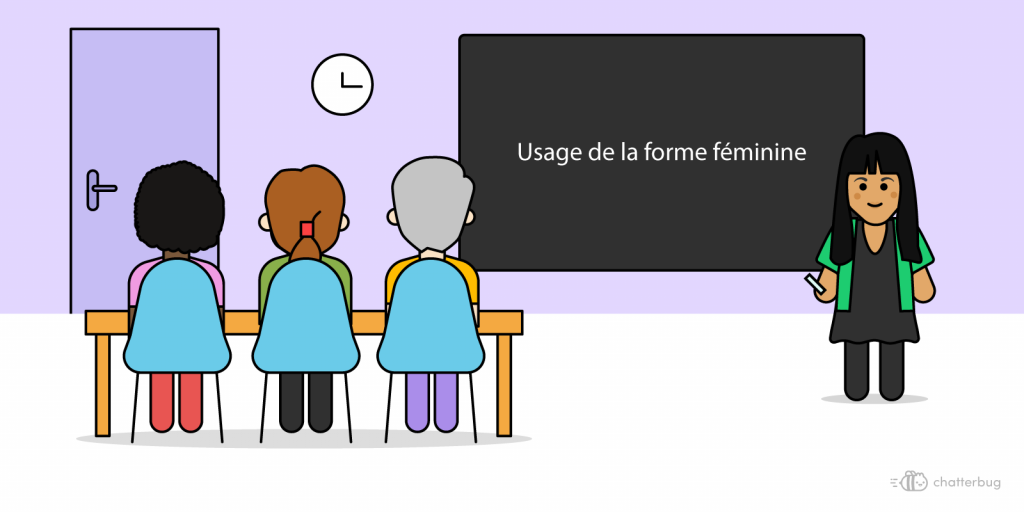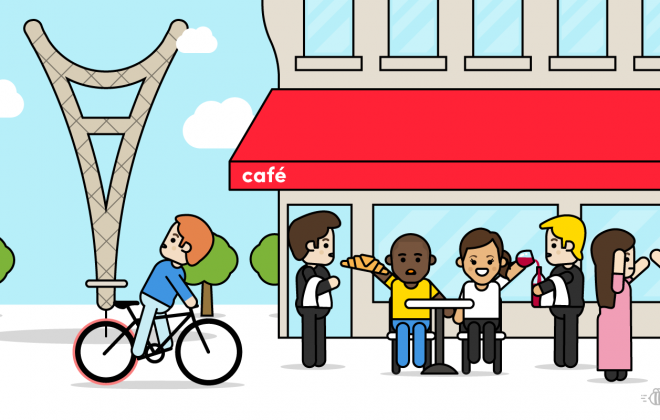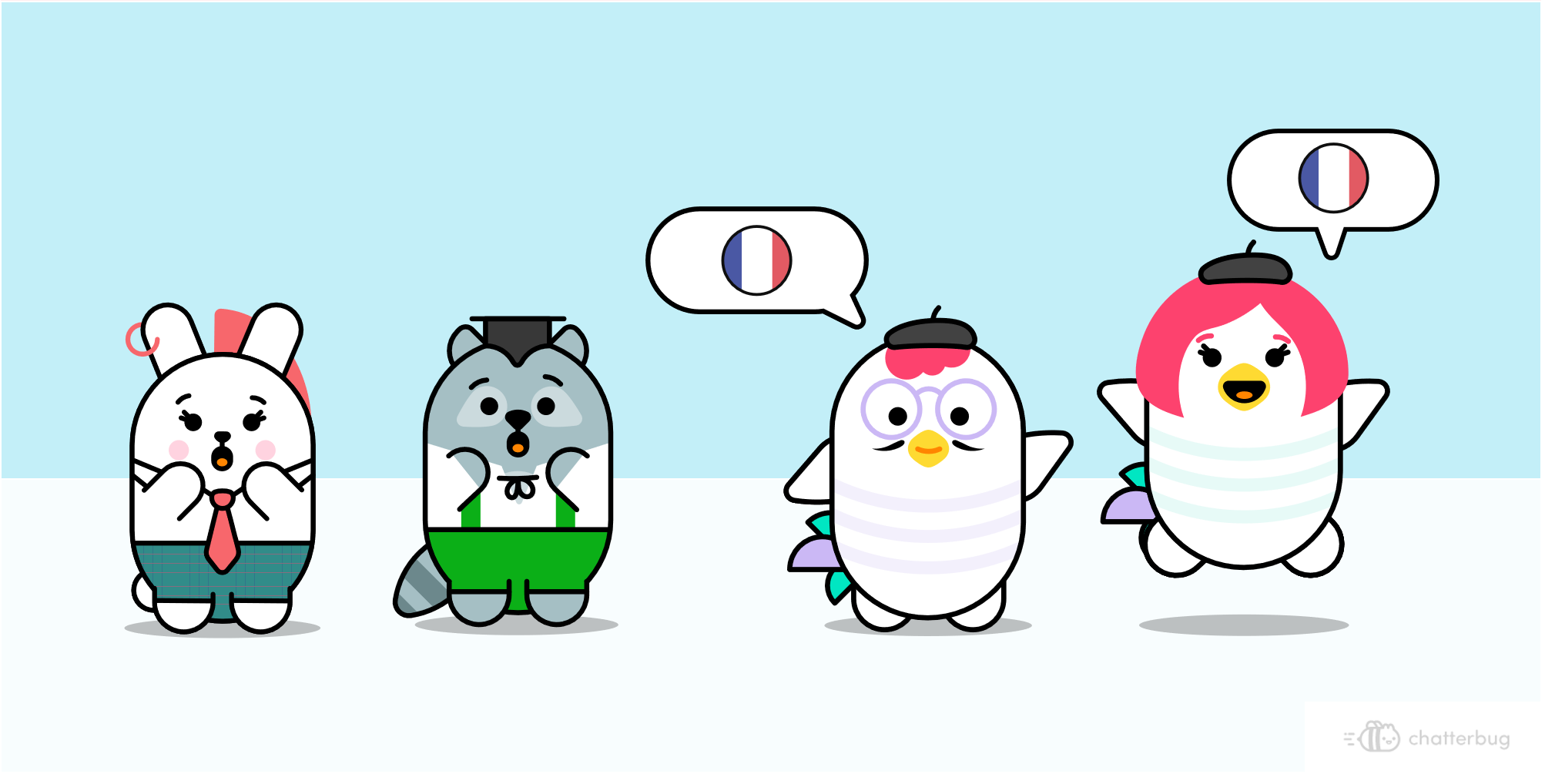How to Be Inclusive in French
Do you think that learning a language also goes with keeping yourself informed of its evolution and trends? Feeling like you want to be part of a movement? To make it easier for you, we’ve listed the current discussions about inclusivity in the French language. Be ready to question all that you’ve learned about French so far… and be ready to learn more on this topic than French speakers know themselves! So, language learners, let’s take a look at how to be more inclusive in French…
The state of play
If you’re not familiar with French, let me quickly tell you that everything has a gender: feminine or masculine. Everything you see is categorised into le (masc.) or la (fem.). The default in French sees the masculine form used to talk about a group and became “neutral”. But is it really neutral?
Inclusive language allows you to connect with a bigger range of people, and has a positive impact on your interactions with those around you. It is becoming clear for more and more people that using the masculine form by default is not without negative consequences in our lives. So, let’s see how we can be more inclusive in French!
(Please note here that what we are writing might not be in harmony with what l’Académie française is advising.)
For those of you who don’t know what l’Académie française is: it’s a group of 35 people called ”les immortels” – please note the use of the masculine term 😉 – who have been elected to “hold the French language” (no less!). Since its foundation by Richelieu in 1635, l’Académie française has the task of “giving certain rules to our language and to make it pure, eloquent”. They publish a dictionary and advise on the use of certain terms rather than others. They also answer questions people might have on the French language.

FYI: The youngest member is born in 1957, only 6 members are women, the majority are writers, journalists, philosophers, historians (one is anecclesiastic!) but none of them are linguists! They are known for being rather “cautious” with new terms (last volume of the dictionary was published in 2011) and attached to traditions. For example, using the feminine form to talk about professions was officially recommended by l’Académie française only in 2019!)
Using epicene nouns
Writing/saying “étudiants” (male students) when you want to address all students has the consequence of erasing women and anyone who doesn’t identify with the French language’s binary genders. Instead of using the masculine word, alternatives could be found in epicene words, i.e. words whose form does not vary between masculine and feminine, for example:
→ “les membres de la communauté étudiante”
It’s interesting to notice that inclusive language does not develop in the same way in all French speaking countries. It seems obvious, but we have the tendency to take France as a reference for the French language, thinking that it “makes the rules” and influences the language the most. Yet in terms of inclusivity, Quebec seems to be ahead. The stormy debates that are moving France right now around the topic could appear quite puzzling for our Canadian cousins, who might wonder why we are still arguing about using “la communauté étudiante” (the student community) over “les étudiants” (the male students). Proof that, again, language forms are the results of choices and habits.
Using masculine and feminine forms
Traditionally in French, if you want to be inclusive when writing, brackets are used: étudiant(e). This is what you’re going to see in a vast majority of writing, including in French learning books because we did not know better until now. Brackets might suggest something that is secondary. For a few years now, we note a big (r)evolution regarding the way the feminine and plural forms could appear.
Here are some examples:
→ étudiant.e ; étudiant/e ; étudiant-e ; étudiant·e
→ étudiant.e.s ; étudiant/es ; étudiantes-es ; étudiant·e·s ; étudiant·es
There is no rule regarding which form is the best, however we note a tendency for the use of the point, being in a classic position (.) or in the centre (·).
You might ask how to pronounce these versions? You have the choice : “étudiantes, étudiants” or “étudiants, étudiantes”. We might also see “toustes” or “tous·tes” on some social media platforms, a mix between “tous” et “toutes” (every-all).
Using the feminine form
Because words have an impact, here we made a point of not using the term “feminisation” – which might give the sensation that the feminine form was “made up” and did not exist before – we rather use “usage de la forme féminine” because it does already exist, its usage just got lost overtime. So, if you’re talking about a woman’s job, use the feminine form 😁 :
– elle est ingénieur → ingénieure (engineer)
– elle est maire → mairesse (mayor)
– Madame le Président → Madame la Présidente (president)
Debate: some words have two feminine forms, which one should I use?
– un auteur → une auteure, une autrice
– un docteur → une docteure, une doctoresse
Again, since there are no official rules, there are different usages, some motivated by taste, some motivated by historical reasons. If you’re interested in the topic, Eliane Viennot, Emeritus Professor of Renaissance Literature, is explaining the differences between those terms on her blog.
If you’re still unsure, watch this funny video which sums up the rules and ideas we’ve discussed so far. It’s a great example of a very famous French TV channel using inclusive language:
Using the majority agreement
As a French teacher, very often when I present the “standard rule” of agreement in French to students, they raise their eyebrows… let’s see how you will react, ready? Here we go:
– 100 women = use of the pronom “elles” (feminine ”them”)
– 100 men = use of the pronom “ils” (masculine ”them”)
– 99 women, 1 man = use of the pronom “ils” (masculine ”them”)
French people know this rule embedded in the sentence learned at school: “le masculin l’emporte sur le féminin” (the masculine takes precedence over the feminine). I personally learned the rule without realising how awkward this sentence really was. It’s only when I grew up that I came back to realise how terrible the meaning of it was. It’s like we don’t even hide what’s going on in society; ‘Man’ is seen as the norm, everything beyond this is ‘other’ and can be included in the masculine form. This shows the lack of inclusivity in French, and how it takes a little effort if you want to be inclusive in French.
Now some people are suggesting we should change this rule and just go with the gender that holds the majority of people. Seems about fair, right? However, it’s not yet used by a lot of people, so it might not be often that you’ll be able to witness its use.

Using the proximity agreement
Look at these sentences: (The men and women present)
-Les hommes et les femmes présentes.
-Les hommes et les femmes présents.
See the difference? One was commonly used before the XVII and the other one became the rule after. Guess which one? Yes, you guessed it, the second one is commonly used nowadays. Why such a shift towards the masculine form? The use of words is political. Words say something about the period they are used in.
Right now, the masculine agreement is called into question and some people start to use the proximity agreement again. Note that, since it’s the beginning of the movement, you might not see this agreement often. (However, we hope that maybe as people become more inclusive in French, you will see it more!)
Using gender neutral pronouns
Very recently, people who do not identify with the feminine pronouns “elle-elles” (she/her-they), neither in the masculine ‘il-ils’ (he-they), started to use other pronouns. Since French has two gender pronouns for the singular and also for the plural, people had to get creative. There are different pronouns that are mentioned, but the most common ones are “iel-iels” (pronounced “yel”). The best advice we can give here is just: be aware that some people don’t feel represented by the classical pronouns and be ready to adapt your language to how they prefer to be addressed.
Voilà !
We hope this has helped you understand how to be more inclusive in French. These are the only the current discussions on inclusivity in French. Keep in mind that there are constant evolutions around those terms and that that other terms not mentioned in this blog post may exist by now. If you’re interested in seeing how inclusive language is used in real life, you can join the Facebook group #taglinclusive, where people share screenshots of public communications using inclusive language.
Sources: L’académie française ; Eliane Viennot’s blog ; Article du Monde : L’Académie française se résout à la féminisation des noms de métiers ; Mais qui a inventé les mots ? ; La vie en queer ; Genre !
Want to learn more?
If you’re looking for fun, engaging language-learning material, try our Chatterbug Streams app, and learn through interactive live-streams!
Or try a two-week free trial including a private lesson with one of our qualified tutors, so you could start speaking for real! Our lessons are structured around exercises created by linguists and language teachers, so there will be no awkward silences – we promise! You can also find us on Facebook, Instagram, or Twitter for more content!




